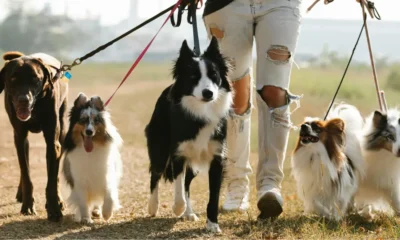World
Which Are the 7 Wonders of the World?
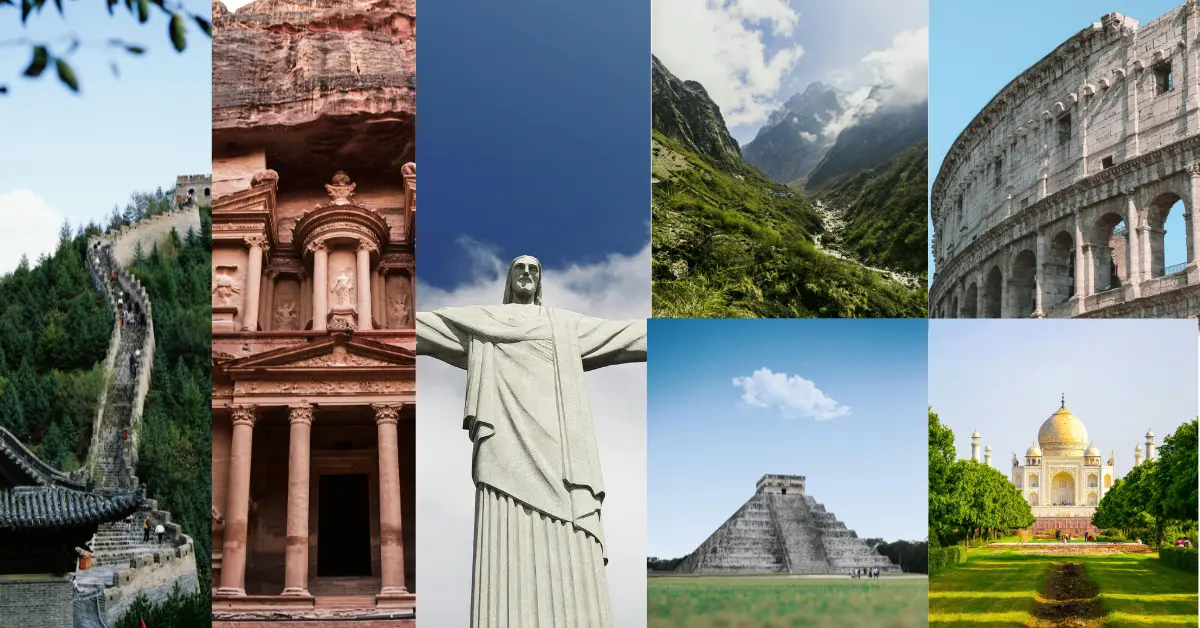
Key Takeaways
- Learn about the 7 Wonders of the World, both ancient and modern.
- Understand their historical and cultural significance.
- Explore travel tips to visit these iconic sites.
Introduction
When you hear “7 Wonders of the World,” you probably picture stunning monuments, towering structures, or places so beautiful they almost seem unreal. But what exactly are these wonders, and why were they chosen?
This article dives deep into the 7 Wonders of the Ancient World and the New 7 Wonders of the World, explaining what makes each one extraordinary. Whether you’re a traveler, a history buff, or just curious, this guide will help you understand why these landmarks have captured the world’s imagination for centuries.
Let’s explore each wonder, step by step, to see how they came to symbolize the marvels of human ingenuity and creativity.
The 7 Wonders of the Ancient World
The 7 Wonders of the Ancient World is a list of remarkable constructions from classical antiquity. Only one of these wonders still exists today. Here’s a closer look at each:
1. Great Pyramid of Giza (Egypt)
- Built: Around 2560 BCE
- Purpose: Tomb for Pharaoh Khufu
- Why It’s a Wonder: This is the oldest and only surviving ancient wonder. The pyramid’s precise construction, with massive limestone blocks weighing several tons each, continues to baffle engineers.
2. Hanging Gardens of Babylon (Iraq)
- Built: Estimated 600 BCE (if it existed)
- Purpose: A lush terraced garden reportedly built for Queen Amytis by King Nebuchadnezzar II.
- Why It’s a Wonder: Descriptions talk of an oasis in the desert, but no archaeological evidence has been found, leaving its existence a mystery.
3. Statue of Zeus at Olympia (Greece)
- Built: 435 BCE
- Purpose: A tribute to Zeus, the king of the Greek gods.
- Why It’s a Wonder: This massive statue of ivory and gold stood inside the temple of Zeus, reflecting Greek artistry and religious devotion.
4. Temple of Artemis at Ephesus (Turkey)
- Built: Around 550 BCE
- Purpose: Dedicated to Artemis, the goddess of the hunt.
- Why It’s a Wonder: Known for its grandeur, it was rebuilt multiple times after destruction but still symbolized ancient Greek architectural brilliance.
5. Mausoleum at Halicarnassus (Turkey)
- Built: 350 BCE
- Purpose: A grand tomb for Mausolus, a Persian satrap.
- Why It’s a Wonder: Its intricate carvings and design inspired the term “mausoleum.”
6. Colossus of Rhodes (Greece)
- Built: Around 280 BCE
- Purpose: Celebrate Rhodes’ victory over Cyprus.
- Why It’s a Wonder: This 33-meter-high bronze statue, though short-lived, was an engineering marvel.
7. Lighthouse of Alexandria (Egypt)
- Built: Around 280 BCE
- Purpose: Guide sailors safely to Alexandria’s harbor.
- Why It’s a Wonder: It stood 100 meters tall and used reflective materials to emit light visible for miles.
The New 7 Wonders of the World
In 2007, the New 7 Wonders of the World were chosen through a global poll. These wonders span continents and represent human ingenuity and cultural heritage.
1. Great Wall of China (China)
- Built: 7th century BCE to 16th century CE
- Why It’s a Wonder: Stretching over 13,000 miles, it’s the world’s longest wall and a symbol of perseverance.

2. Petra (Jordan)
- Built: Around 4th century BCE
- Why It’s a Wonder: This city carved into rose-red sandstone is an archaeological treasure.

3. Christ the Redeemer (Brazil)
- Built: 1931
- Why It’s a Wonder: This massive statue of Jesus overlooks Rio de Janeiro, symbolizing peace and faith.

4. Machu Picchu (Peru)
- Built: 15th century
- Why It’s a Wonder: The “Lost City of the Incas” showcases advanced engineering and stunning natural beauty.
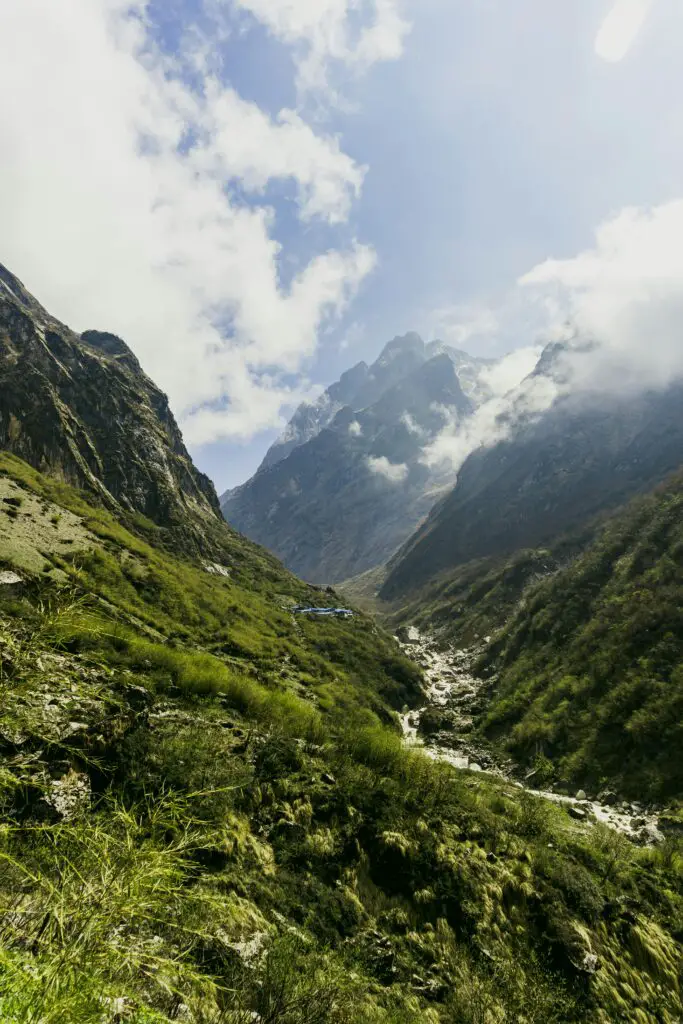
5. Chichen Itza (Mexico)
- Built: Around 600 CE
- Why It’s a Wonder: The Mayan city is famous for its El Castillo pyramid, an ancient astronomical calendar.

6. Roman Colosseum (Italy)
- Built: 70–80 CE
- Why It’s a Wonder: This amphitheater hosted gladiator fights and public spectacles, showcasing Roman engineering.
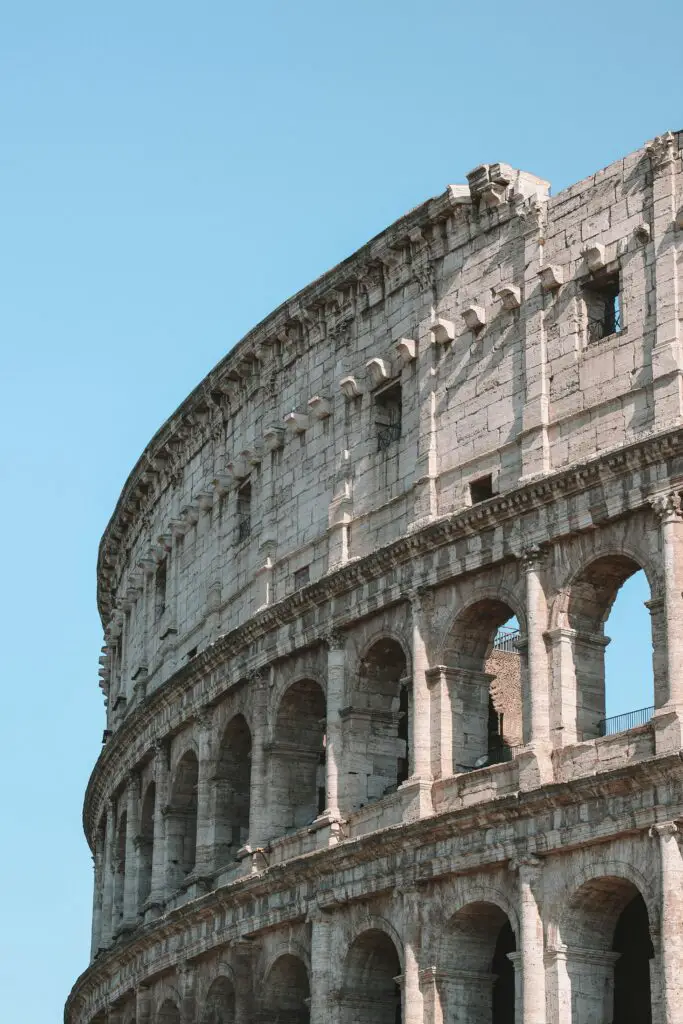
7. Taj Mahal (India)
- Built: 1632–1653
- Why It’s a Wonder: A white marble mausoleum built as a symbol of love by Emperor Shah Jahan.

FAQs
What Are the Differences Between the Ancient and Modern Wonders?
- Ancient Wonders: Mostly located in the Mediterranean and focus on ancient civilizations.
- Modern Wonders: Spread across the world and reflect diverse cultures.
Can I Visit All These Wonders?
Yes! Most modern wonders are open to tourists. The Great Pyramid of Giza is the only surviving ancient wonder you can visit.
Why Were These Wonders Selected?
Each wonder was chosen for its unique historical, cultural, or architectural significance.
Conclusion
The 7 Wonders of the World, both ancient and modern, offer a glimpse into human creativity, dedication, and innovation. Whether you dream of walking along the Great Wall of China or marveling at the Taj Mahal’s beauty, these wonders inspire us to appreciate our shared history.
Further Reading
Nature
The 10 Largest Farms in the World

Key Takeaways
- The world’s biggest farms are mainly found in Australia, China, and the USA.
- These farms cover millions of acres, with some larger than entire countries.
- Cattle farming dominates large-scale agriculture, but some farms focus on dairy or conservation.
- Advancements in technology, sustainability, and climate adaptation shape the future of large farms.
- Large farms play a vital role in global food production and economic impact.
What Are the Largest Farms in the World?
Farms come in all shapes and sizes, but some are so big they look more like small countries than agricultural businesses. These massive farms produce meat, dairy, and crops on an unimaginable scale. Most of them are located in remote regions, where vast open lands allow livestock and crops to thrive.
The largest farm in the world covers a staggering 22 million acres, nearly the size of Portugal! If you’re curious about these farming giants, let’s explore the top 10 biggest farms and what makes them so massive.
How Do We Measure Farm Size?
Before diving into the list, it’s important to understand what makes a farm “big.” Farms can be measured by:
- Total land area (acres or hectares).
- Number of livestock (cattle, sheep, etc.).
- Crop production volume (tons of wheat, corn, etc.).
For this list, we are ranking farms based on total land area, as it’s the easiest way to compare their sheer size.
The 10 Largest Farms in the World
1. Mudanjiang City Mega Farm (China) – 22 Million Acres
- Location: China
- Type: Dairy farm
- Main Products: Milk, dairy products
- Why It’s Huge: This farm is the largest dairy farm on Earth, producing milk for China’s growing population. It has over 100,000 cows and supplies milk that would otherwise be imported from New Zealand.

2. Anna Creek Station (Australia) – 6 Million Acres
- Location: South Australia
- Type: Cattle farm
- Main Products: Beef
- Why It’s Huge: This cattle station is bigger than the country of Israel! It has been a key player in Australia’s beef industry for decades, despite being located in one of the driest regions on the planet.

3. Clifton Hills Station (Australia) – 4.2 Million Acres
- Location: South Australia
- Type: Cattle farm
- Main Products: Beef
- Why It’s Huge: This farm is another massive Australian cattle station, taking advantage of the vast open lands to raise thousands of cows.

4. Alexandria Station (Australia) – 4 Million Acres
- Location: Northern Territory, Australia
- Type: Cattle farm
- Main Products: Beef
- Why It’s Huge: One of the biggest pastoral leases in Australia, known for its ability to withstand extreme weather conditions.

5. Davenport Downs (Australia) – 3.7 Million Acres
- Location: Queensland, Australia
- Type: Cattle farm
- Main Products: Beef
- Why It’s Huge: With more than 200,000 cattle, this farm is a powerhouse of beef production.

6. Home Valley Station (Australia) – 3.5 Million Acres
- Location: Western Australia
- Type: Cattle farm & tourism
- Main Products: Beef, eco-tourism
- Why It’s Huge: This farm is unique because it also focuses on sustainable tourism, offering visitors a chance to experience the outback lifestyle.

7. Innamincka Station (Australia) – 3.3 Million Acres
- Location: South Australia
- Type: Cattle farm
- Main Products: Beef
- Why It’s Huge: This historic farm has been operating for over 100 years and remains a key player in Australia’s livestock industry.

8. Wave Hill (Australia) – 3.3 Million Acres
- Location: Northern Territory, Australia
- Type: Cattle farm
- Main Products: Beef
- Why It’s Huge: This station is known for its role in Indigenous land rights history and is still an important cattle operation today.
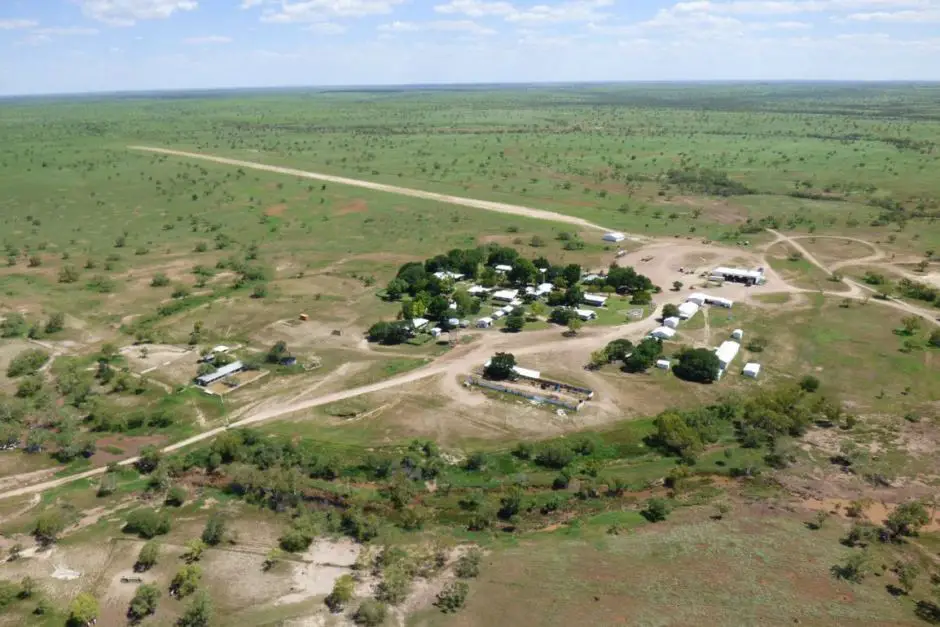
9. King Ranch (USA) – 825,000 Acres
- Location: Texas, USA
- Type: Cattle farm
- Main Products: Beef, horse breeding
- Why It’s Huge: The largest ranch in the United States, known for its high-quality cattle and thoroughbred horses.

10. Vermejo Park Ranch (USA) – 590,000 Acres
- Location: New Mexico, USA
- Type: Conservation & ranching
- Main Products: Wildlife conservation, cattle
- Why It’s Huge: Owned by media mogul Ted Turner, this farm focuses on environmental conservation and sustainable ranching.
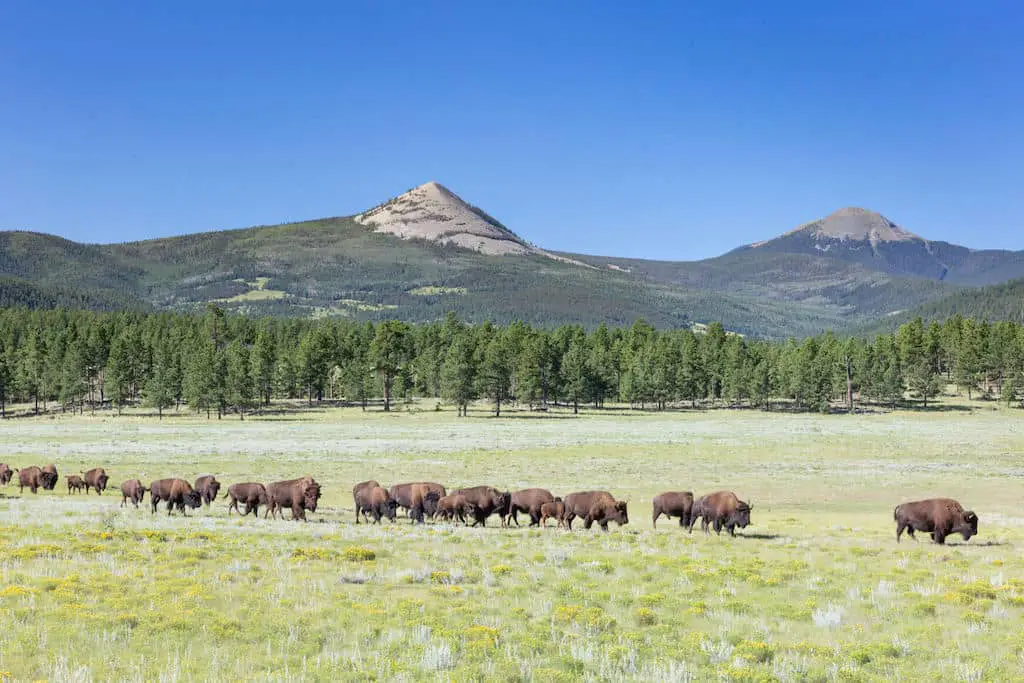
What Do These Farms Have in Common?
The biggest farms in the world share some key features:
- Vast, open landscapes: Most are in remote, dry regions.
- Livestock dominance: Cattle farming is the most common operation.
- Advanced technology: Many use drones, satellite tracking, and automated feeding systems.
- Economic impact: These farms contribute significantly to local and global agriculture.
The Future of Large-Scale Farming
As farming technology improves, we may see:
- More automation and AI to increase efficiency.
- Better water management to sustain large-scale farms.
- Sustainability efforts to reduce environmental impact.
- Alternative farming techniques like vertical and lab-grown food production.
Conclusion
The world’s largest farms are not just about size—they’re about feeding millions, sustaining economies, and pushing farming technology forward. From China’s dairy giant to Australia’s massive cattle stations, these farms are essential for global food production.
As the demand for food grows, these farms will continue to evolve, embracing new technology and sustainable practices to meet the world’s needs.
FAQs
1. What is the largest farm in the world?
The Mudanjiang City Mega Farm in China is the largest farm in the world, covering 22 million acres and focusing on dairy production.
2. Why are most of the biggest farms in Australia?
Australia has vast, open lands perfect for large-scale cattle farming, making it home to most of the world’s biggest farms.
3. Do these large farms use advanced technology?
Yes! Many large farms use drones, GPS tracking, automated irrigation, and AI-driven management systems to operate efficiently.
4. Are there large farms in other parts of the world?
Yes, but they are much smaller compared to those in Australia, China, and the USA. Some large farms exist in Brazil, Russia, and Argentina.
These farms are more than just land—they’re powerhouses of food production that help feed the world! 🌎🍽️
World
Choosing a Place to Camp and the Things to Follow

Key Takeaways
- Learn how to choose the best camping spot based on location, safety, and convenience.
- Understand the essential guidelines to follow for a safe and enjoyable camping experience.
- Discover practical tips to minimize environmental impact while camping.
- Avoid common mistakes when selecting a campsite.
How to Choose the Best Place to Camp (Quick Answer)
To choose the right camping spot, focus on safety, convenience, and comfort. Look for flat, dry areas away from hazards like cliffs or water. Check weather forecasts, follow local regulations, and prepare for the unexpected. Always prioritize leaving no trace to protect the environment.
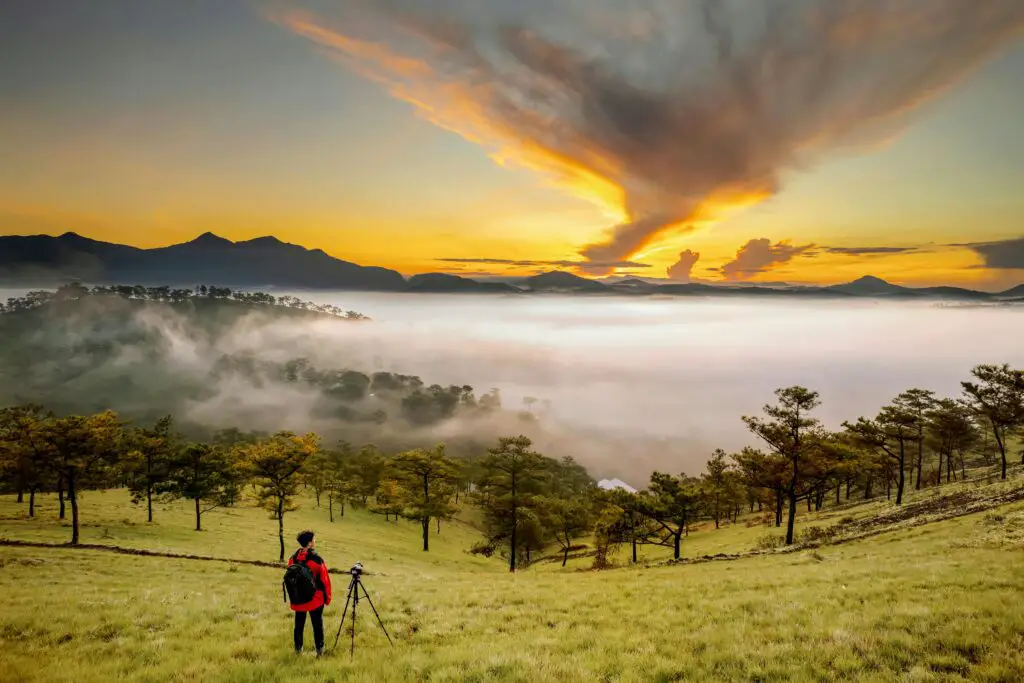
Why Choosing the Right Camping Spot Matters
Camping is more than just setting up a tent outdoors; it’s about connecting with nature, relaxing, and creating memories. But a poor campsite choice can turn your adventure into a disaster. Imagine waking up in a flooded tent or realizing you’ve pitched too close to wildlife. The right spot sets the tone for a safe and enjoyable experience. Let’s dive into how you can make the best choice and the rules to follow once you’re there.

Factors to Consider When Choosing a Camping Spot
Location Matters
Where you camp can make or break your trip. Always pick a spot based on your trip goals:
- Close to Nature but Safe: Look for a site with beautiful views but not near hazards like steep cliffs or fast-flowing rivers.
- Proximity to Essentials: Be near water sources but not too close—50-100 feet away is ideal to avoid flooding and wildlife encounters.
- Accessibility: If you’re driving, ensure the site is reachable by vehicle. If hiking, make sure the route suits your fitness level.

Safety First
Safety should always come first. Here’s what to keep in mind:
- Check for Hazards: Avoid low-lying areas prone to flooding or windy ridges.
- Wildlife Awareness: Don’t camp near animal trails, dens, or food sources.
- Emergency Access: Make sure you know the nearest exit route and have cell reception or a backup plan in case of emergencies.

Privacy and Comfort
Camping is about escaping the chaos, so look for a quiet spot. Avoid overcrowded areas, and choose a site with natural windbreaks like trees or rocks for added comfort.

Permits and Regulations
Every camping area has its own rules. Check if permits are required or if there are specific restrictions, like fire bans. Ignoring these can lead to fines or unsafe situations.

Things to Follow While Camping
Leave No Trace Principles
The golden rule of camping is to leave the site as you found it—or better. This includes:
- Minimizing Waste: Pack out all trash, including food scraps.
- Staying on Trails: Avoid trampling vegetation or creating new paths.
- Respecting Wildlife: Don’t feed animals or disturb their habitat.



Campfire Safety
Campfires can add warmth and joy to your experience but must be handled responsibly:
- Only use designated fire pits.
- Keep fires small and manageable.
- Extinguish fires completely before leaving.


Storing Food Safely
Improper food storage can attract wildlife, putting you and the animals at risk. Use bear-proof containers and store food at least 100 feet from your sleeping area.

Health and Hygiene
Stay clean without harming the environment:
- Use biodegradable soap for washing dishes and yourself.
- Purify water from natural sources to prevent illness.
- Set up a toilet area at least 200 feet from water sources and trails.

Mistakes to Avoid When Camping
- Ignoring Weather: Don’t skip checking the forecast—it’s crucial for packing the right gear.
- Choosing Poor Ground: Avoid rocky, sloped, or wet areas for your tent.
- Camping Too Close to Water: Floods can happen suddenly, and water attracts animals.

FAQs
What’s the best type of camping spot for beginners?
Start with established campgrounds. They often have amenities like toilets, fire pits, and marked trails, making them beginner-friendly.
How far should my tent be from water?
Keep your tent at least 50-100 feet from water sources to avoid flooding and reduce your impact on the environment.
Can I camp anywhere I want?
Not always. Many places require permits or have specific rules about where you can camp. Always check local regulations.
What’s the most common mistake campers make?
One common mistake is leaving food out, which attracts wildlife. Always store food securely in bear-proof containers or hang it from a tree.
Conclusion
Choosing the right place to camp and following essential guidelines can make your trip unforgettable for all the right reasons. Whether you’re a seasoned camper or just starting out, safety, comfort, and respect for nature are key. Plan wisely, follow the rules, and enjoy the beauty of the great outdoors.
For more camping tips and safety advice, visit trusted resources like Leave No Trace or your local park authority.
World
What Are the Top 10 Biggest Lakes in the World?

Are you curious about the largest lakes on Earth? If you’re a nature lover, geography enthusiast, or someone who simply enjoys learning about our planet, you’re in the right place. Lakes are more than just beautiful bodies of water—they’re vital for life, ecosystems, and even the economy. In this guide, we’ll explore the top 10 biggest lakes in the world, ranked by surface area. So, buckle up for an exciting journey into these massive natural wonders!
Key Takeaways
- Learn about the 10 largest lakes in the world by surface area.
- Discover their locations, sizes, and fascinating features.
- Understand why these lakes are significant for the environment and people.
What Are the Top 10 Biggest Lakes in the World?
The biggest lakes on Earth are ranked by their surface area, and they span across various continents. Here’s a detailed breakdown:
1. Lake Superior – 82,100 km²
Location: North America (USA and Canada)
Lake Superior is the largest freshwater lake in the world by surface area. It’s part of the Great Lakes system and shares borders with the United States and Canada.
Key Features
- Contains 10% of the world’s surface freshwater.
- Known for its crystal-clear waters and scenic beauty.
Fun Fact: The name “Superior” reflects its immense size and its position as the uppermost Great Lake.

2. Lake Victoria – 68,870 km²
Location: Africa (Tanzania, Uganda, Kenya)
Lake Victoria is Africa’s largest lake and the second-largest freshwater lake in the world by surface area.
Key Features
- Supports over 30 million people living around its shores.
- A vital source of fishing and transportation in East Africa.
Fun Fact: The lake was named after Queen Victoria by British explorers.
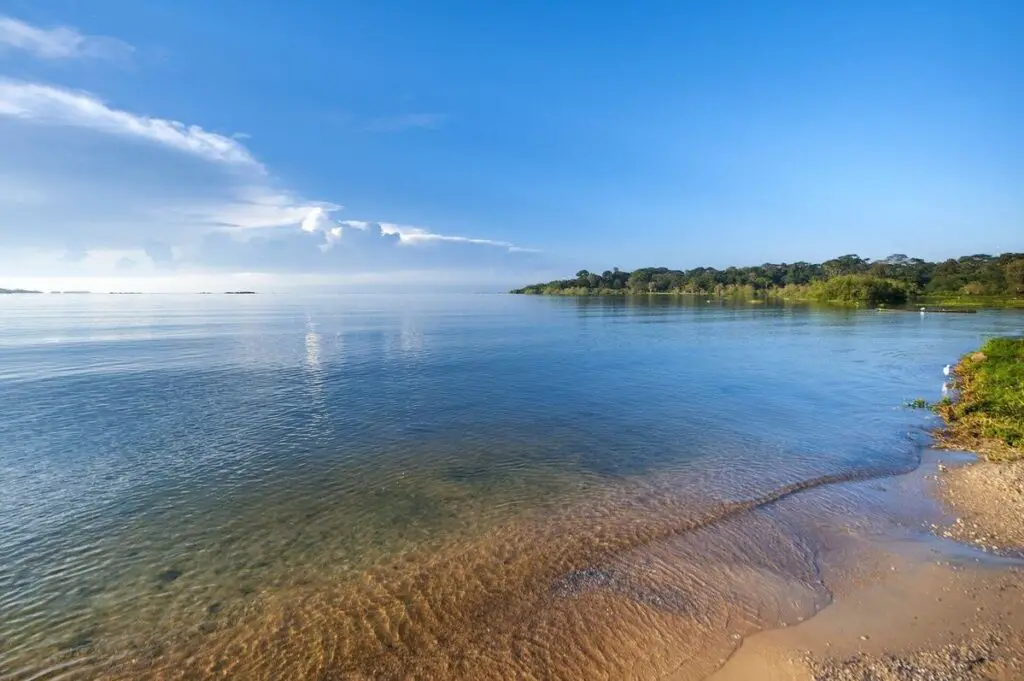
3. Lake Huron – 59,600 km²
Location: North America (USA and Canada)
Lake Huron, another member of the Great Lakes, is known for its stunning islands and shoreline.
Key Features
- Home to Manitoulin Island, the world’s largest freshwater island.
- Famous for its shipwreck-diving sites.
Fun Fact: It’s named after the Huron indigenous people who lived in the region.

4. Lake Michigan – 58,000 km²
Location: USA
Lake Michigan is the only Great Lake entirely within the United States.
Key Features
- Known for its sandy beaches and dunes.
- A popular spot for boating and fishing.
Fun Fact: It connects to Lake Huron through the Straits of Mackinac, forming a single hydrological body.
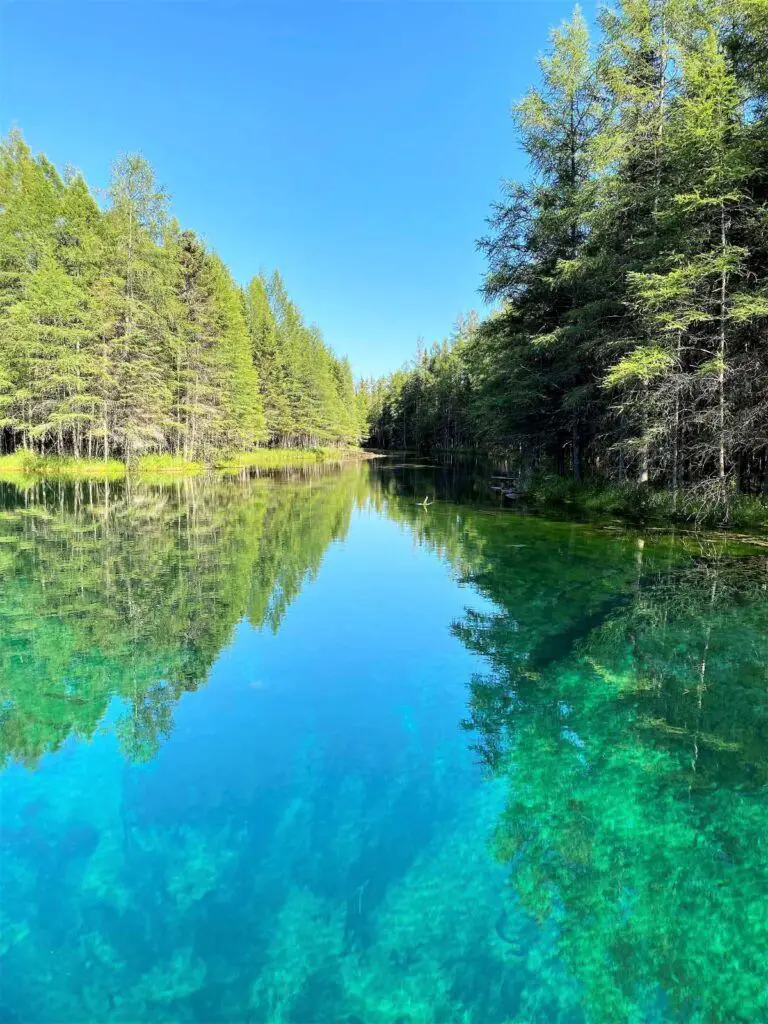
5. Caspian Sea – 371,000 km²
Location: Europe/Asia
Technically a lake, the Caspian Sea is the largest enclosed body of water on Earth.
Key Features
- Contains both freshwater and saltwater areas.
- A vital resource for oil and gas extraction.
Fun Fact: Despite being called a “sea,” it’s considered a lake due to its lack of an outlet.
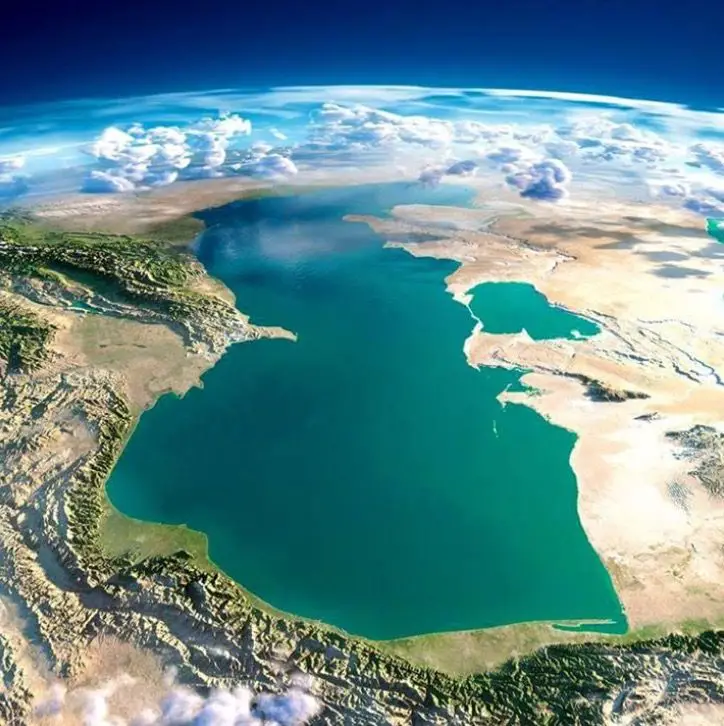
6. Lake Tanganyika – 32,900 km²
Location: Africa (Tanzania, DRC, Burundi, Zambia)
Lake Tanganyika is the longest freshwater lake in the world and one of the deepest.
Key Features
- Renowned for its biodiversity, including unique fish species.
- Important for fishing and transportation.
Fun Fact: Its waters drain into the Congo River system.
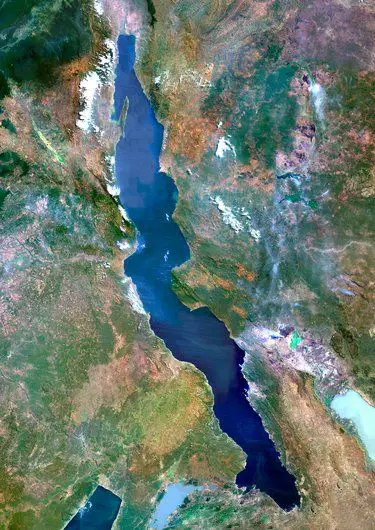
7. Lake Baikal – 31,500 km²
Location: Russia
Lake Baikal holds the title for the world’s deepest and oldest lake.
Key Features
- Contains 20% of the world’s unfrozen freshwater.
- Known for its unique wildlife, including freshwater seals.
Fun Fact: Lake Baikal is over 25 million years old!

8. Great Bear Lake – 31,080 km²
Location: Canada
Great Bear Lake is the largest lake entirely within Canada.
Key Features
- Located in a remote Arctic region.
- Known for its pristine, untouched environment.
Fun Fact: Its name comes from indigenous legends about bears in the area.

9. Lake Malawi – 29,500 km²
Location: Africa (Malawi, Mozambique, Tanzania)
Lake Malawi is famous for its vibrant underwater ecosystem.
Key Features
- Hosts over 1,000 species of cichlid fish.
- A hotspot for snorkeling and diving.
Fun Fact: Locals often call it “Lake Nyasa,” its traditional name.

10. Great Slave Lake – 28,930 km²
Location: Canada
This Canadian lake is known for its extreme depth and cold climate.
Key Features
- The deepest lake in North America.
- A popular spot for ice fishing and winter sports.
Fun Fact: It’s named after the Slavey indigenous people.

Why Are These Lakes Important?
Lakes like these are essential for:
- Supporting biodiversity and ecosystems.
- Providing drinking water and food.
- Boosting tourism and recreational activities.
- Serving as natural landmarks for human cultures and history.
FAQs
1. What is the largest lake in the world by volume?
Lake Baikal in Russia holds the most water by volume, containing about 20% of the world’s unfrozen freshwater.
2. Why is the Caspian Sea considered a lake?
Despite its name, the Caspian Sea is landlocked and doesn’t drain into any ocean, making it a lake by definition.
3. Which lake has the most fish species?
Lake Malawi boasts the highest diversity of fish species, especially colorful cichlids.
Conclusion
The top 10 largest lakes in the world are not just massive bodies of water; they’re vital parts of our planet’s ecosystem. Each has its own unique features and stories that make it fascinating. Whether you’re into geography, nature, or just exploring the wonders of Earth, these lakes offer plenty to marvel at.
Ready to dive deeper? Start planning your visit to one of these amazing lakes today!
-

 Animals12 months ago
Animals12 months agoTypes of Ants Living in the World and Information
-

 Forests12 months ago
Forests12 months agoThe 10 Best Forests to Visit in the World
-

 Ocean1 year ago
Ocean1 year agoOceans in the World and Their Information & Locations
-

 Forests4 years ago
Forests4 years agoWhat Is The Biggest Rainforest In The World?
-

 Animals4 years ago
Animals4 years agoMost Popular Wild Animals in The World
-

 Animals4 years ago
Animals4 years ago(10) Insects Are Animals in the world?
-

 Forests1 year ago
Forests1 year agoThe Main Factors That Contribute to Forest Destruction
-

 Nature11 months ago
Nature11 months agoThe 10 Largest Farms in the World



